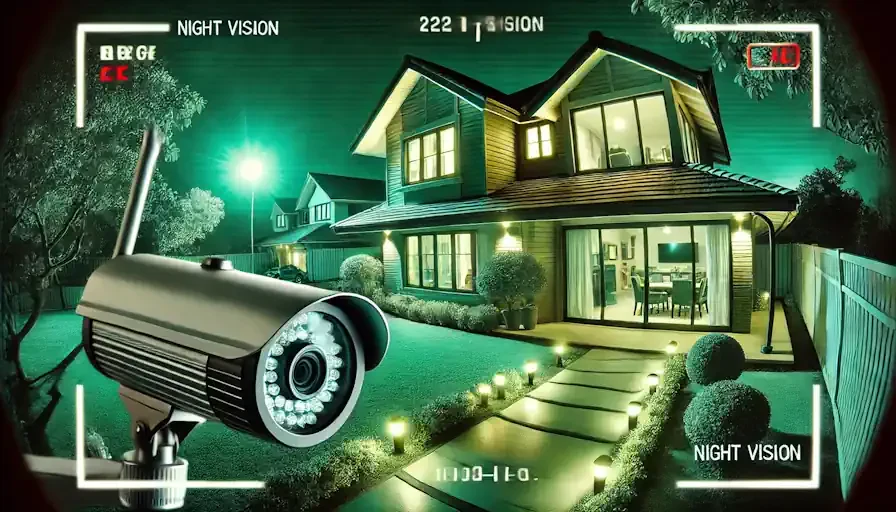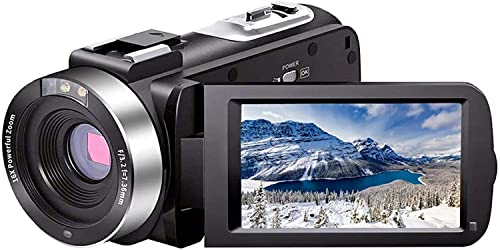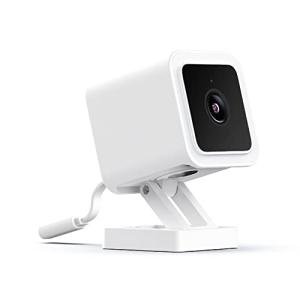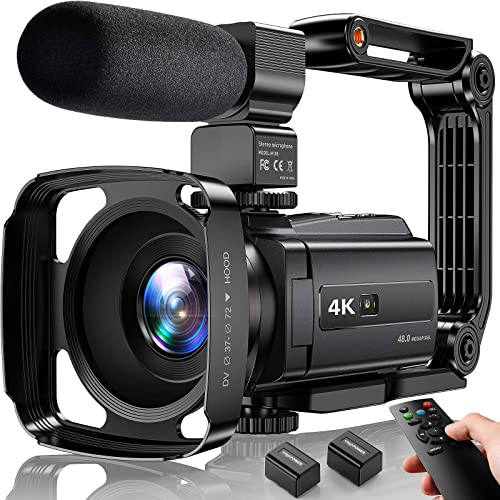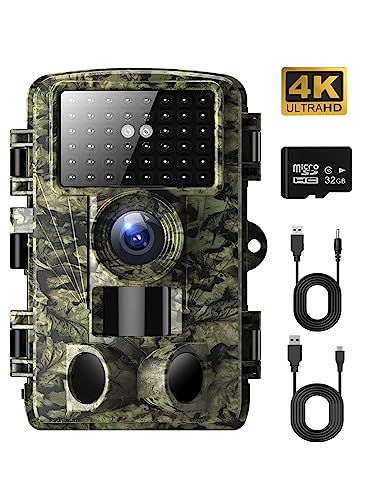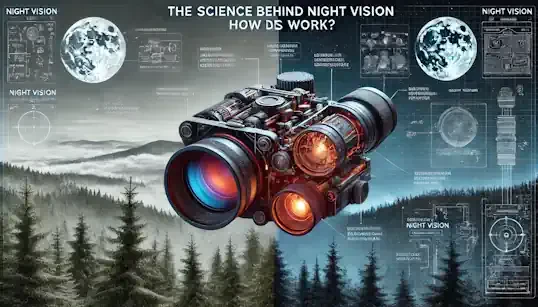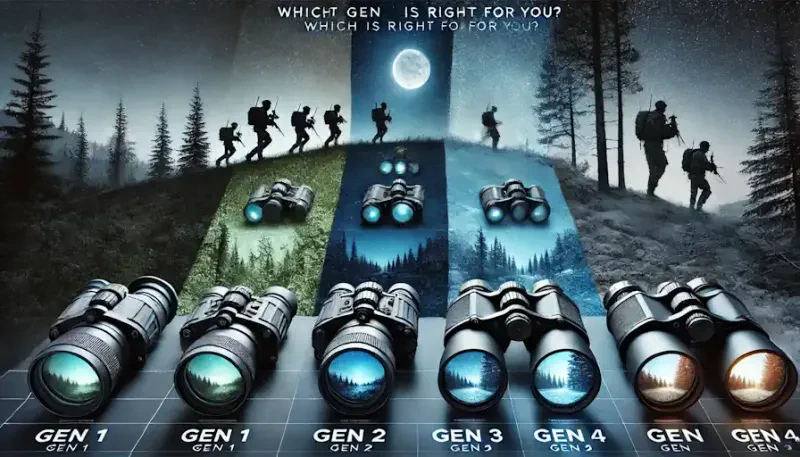You're likely familiar with the unsettling feeling of wondering what's going on outside your home after dark. That rustle in the bushes, the creak on the porch – our imaginations can run wild. While it's natural to feel vulnerable, darkness doesn't have to equate to insecurity. Night vision security cameras have revolutionized home security, providing a powerful way to "see" in the dark and significantly enhance the protection of your property. This expanded article acts as a complete resource, delving deeper into the technology, options, installation, and legal considerations surrounding night vision security cameras. We aim to equip you with the knowledge and confidence to implement a system tailored to your specific home and needs, giving you control and peace of mind, no matter the hour.
The assertion that burglaries are more prevalent at night isn't based on conjecture; it's supported by concrete data. The FBI's Uniform Crime Reporting (UCR) Program consistently reveals that a disproportionately high number of burglaries occur during nighttime hours. This isn't surprising; darkness provides cover, making it easier for intruders to approach a property undetected and to conceal their activities. The reduced visibility hinders both homeowners and neighbors from spotting suspicious activity, giving criminals a perceived advantage.
While we invest in various security measures, many traditional approaches have limitations when darkness falls. Motion-activated lights, a common deterrent, can be circumvented. Intruders can move slowly to avoid triggering the sensor, or they might simply disable the light itself. Standard security cameras, lacking night vision capabilities, are often rendered ineffective in low-light scenarios. The resulting footage is frequently grainy, dark, and lacks sufficient detail to identify individuals or even discern what transpired. This lack of clear visual information severely hampers any subsequent investigation.
This is where night vision security cameras provide a distinct and crucial advantage. They offer clear visibility in low-light and even completely dark conditions, transforming the night from a period of vulnerability into one of vigilant monitoring. The presence of visible security cameras, especially those with noticeable IR LEDs, serves as a potent deterrent. Studies have shown that criminals are significantly less likely to target properties that appear to be well-protected and under surveillance. They seek easier targets with lower risks of being caught.
Beyond deterrence, night vision cameras provide the critical ability to gather evidence. Should a break-in or other incident occur, the clear footage captured by these cameras can be instrumental in identifying suspects, understanding the sequence of events, and aiding law enforcement in their investigation and prosecution. This clear visual evidence dramatically increases the likelihood of apprehending the perpetrators and recovering stolen property. The ability to provide concrete proof can also be invaluable for insurance claims.
To fully appreciate the capabilities of night vision security cameras, let's delve a bit deeper into the underlying technology. While the term "night vision" might evoke images of specialized military equipment, the technology used in most home security cameras is readily accessible and surprisingly effective. As mentioned before, there are two principal types: image intensification and thermal imaging.
Image intensification, while powerful, is less common in standard consumer-grade security cameras due to its higher cost and complexity. It works by collecting and amplifying even the faintest traces of available light, such as starlight or distant city glow. This amplified light is then converted into a visible image. While extremely effective in very low-light situations, image intensification is typically found in more specialized, higher-end security and surveillance equipment.
The vast majority of night vision security cameras for home use rely on infrared (IR) illumination. These cameras have built-in infrared LEDs (light-emitting diodes) that emit infrared light. This light is invisible to the naked eye, falling outside the range of the visible spectrum. However, the camera's sensor is specifically designed to be sensitive to infrared light.
The IR LEDs essentially "flood" the area in front of the camera with infrared light. This light bounces off objects and is reflected back to the camera's sensor. The sensor then converts this reflected infrared light into a visible image, typically displayed in black and white. The black-and-white image is a result of the camera's sensor being equally sensitive to all wavelengths of infrared light, unlike the human eye, which differentiates colors within the visible spectrum.
Within IR illumination, there are subtle but important distinctions. Some cameras use LEDs that emit a faint red glow, which is visible to the human eye. This can be a deliberate feature, acting as a visual deterrent to potential intruders. The visible red glow clearly indicates that the area is under surveillance. Other cameras utilize near-visible or "invisible" IR LEDs. These LEDs emit infrared light at a wavelength that is much less perceptible, or even completely imperceptible, to the human eye. This allows for more covert surveillance, where the camera's presence is less obvious.
The range of the IR illumination is a critical specification. This indicates how far the camera can effectively "see" in the dark. The range is determined by the number and power of the IR LEDs, as well as the sensitivity of the camera's sensor. Ranges can vary considerably, from as little as 30 feet to over 100 feet, or even further in some high-end models. Choosing a camera with an appropriate IR range for the area you need to monitor is paramount.
Beyond the core night vision technology, several other camera specifications are vital for optimal performance. Resolution, measured in pixels (e.g., 720p, 1080p, 2K, 4K, and beyond), dictates the clarity and detail of the image. Higher resolution cameras capture more detail, making it easier to identify faces, license plates, and other important features. A higher resolution also allows for better digital zoom, letting you magnify portions of the image without excessive pixelation.
The lux rating is a measure of the camera's sensitivity to light. A lower lux rating signifies better low-light performance. A camera with a lux rating of 0.001 will perform significantly better in near-darkness than a camera with a lux rating of 0.1. Ideally, you want a camera with a lux rating as close to zero as possible for optimal night vision.
The field of view (FOV), expressed in degrees, represents the width of the scene the camera can capture. A wider field of view (e.g., 110 degrees) covers a larger area, but it may reduce the detail of distant objects. A narrower field of view (e.g., 60 degrees) provides a more focused view with greater detail at a distance. The best choice depends on the specific layout of the area you're monitoring. You might need multiple cameras with different FOVs to achieve complete coverage.
The diverse range of night vision security cameras available can be categorized into several common types, each offering a unique set of advantages and disadvantages.
Bullet cameras, with their distinctive cylindrical shape, are a popular choice for outdoor use. Their robust design and weather-resistant housings make them well-suited to withstand the elements. Bullet cameras often boast a longer IR range than other types, making them ideal for monitoring large outdoor areas like driveways, backyards, or long walkways. The prominent, visible design of bullet cameras can also serve as a strong visual deterrent to potential intruders. However, some homeowners may find their appearance less aesthetically pleasing than other options.
Dome cameras, enclosed in a dome-shaped housing, offer a more discreet and less obtrusive profile. They are suitable for both indoor and outdoor applications. The dome shape provides a degree of vandal resistance, making it more difficult for someone to tamper with or reposition the camera. The enclosed design also helps to protect the lens from dust and debris. However, the IR range of dome cameras may sometimes be slightly shorter than that of comparable bullet cameras.
PTZ (Pan-Tilt-Zoom) cameras represent the most versatile, but also the most expensive, option. These cameras offer remote-controlled movement, allowing you to pan (move horizontally), tilt (move vertically), and zoom the camera lens. This provides exceptional coverage of a wide area and enables you to actively track movement or focus on specific points of interest. PTZ cameras are particularly well-suited for large properties, commercial settings, or situations where you need the flexibility to adjust the camera's view remotely. However, their higher cost and more complex installation and operation make them less common for basic home security setups.
The choice between wireless and wired cameras is a fundamental one, with trade-offs in convenience and reliability. Wireless cameras, communicating via Wi-Fi, offer significantly easier installation. There's no need to run cables through walls or ceilings, making them a popular choice for DIY installations. They also provide greater flexibility in placement, as you're not constrained by the location of power outlets or network connections. However, wireless cameras rely on a strong and stable Wi-Fi signal. Interference from other devices or physical obstructions can disrupt the connection, potentially leading to dropped frames or even complete loss of signal. Wireless cameras also require a power source, either through batteries or a nearby outlet, which adds a maintenance element (battery replacement or ensuring a consistent power supply).
Wired cameras, on the other hand, offer a more reliable and robust connection. They transmit video and receive power through physical cables, typically Ethernet cables for IP cameras or coaxial cables for analog cameras. This direct connection eliminates the risk of Wi-Fi interference, ensuring a consistent and stable video stream. Wired cameras also typically require less maintenance, as there are no batteries to replace. However, the installation process is more involved, requiring the routing of cables through walls, ceilings, or underground. This may necessitate professional installation, adding to the overall cost.
Another important distinction is between cameras specifically designed for indoor versus outdoor use. Outdoor cameras are built to withstand the elements, featuring weatherproof housings and a wider operating temperature range. They are typically rated with an IP (Ingress Protection) code, such as IP66 or IP67, which indicates their resistance to dust and water. Indoor cameras, not needing the same level of protection, are often smaller, less obtrusive, and may have a more limited temperature range. Using an indoor camera outdoors will likely result in damage and premature failure.
Effective home security with night vision cameras hinges on strategic placement. Simply installing cameras randomly won't provide the comprehensive coverage you need. The goal is to eliminate blind spots, cover vulnerable areas, and create a layered security perimeter.
Entry points are the most critical areas to secure. Place cameras to monitor your front door, back door, and any other exterior doors, including garage doors. Ensure the cameras have a clear, unobstructed view of anyone approaching these entrances. Capture their faces, if possible, for identification purposes.
Windows, especially those on the ground floor or easily accessible from outside, are also potential entry points. Position cameras to cover any windows that are vulnerable to forced entry.
Driveways and walkways should be monitored to track vehicles and individuals approaching your property. A camera positioned to capture license plates can be invaluable in the event of a crime. Consider a camera with a longer IR range and a narrower field of view to maximize detail at a distance.
Backyards and side yards often contain blind spots and potential hiding places for intruders. Use strategically placed cameras to eliminate these blind spots and provide complete coverage of your property's perimeter. Consider wide-angle cameras to maximize coverage in these areas.
If you have any sheds, workshops, detached garages, or areas where you store valuable equipment, ensure these are also covered by cameras. These are often targets for theft.
Lighting conditions play a significant role in camera placement and performance. Avoid pointing cameras directly at bright light sources, such as streetlights or floodlights, as this can cause glare and wash out the image, hindering the camera's ability to capture detail. Utilize the camera's IR illumination effectively, making sure it covers the intended area without significant obstructions.
The height and angle at which you mount your cameras are also critical. Aim for a height of around 8-10 feet, which is generally high enough to prevent easy tampering but low enough to capture clear facial images. Adjust the angle to provide the best view of the target area, avoiding excessive sky or ground in the frame.
Once you've selected and positioned your cameras, you need to integrate them into a functioning security system. The complexity of your system can range from simple standalone setups to sophisticated, multi-camera networks.
Standalone cameras are the simplest option, ideal for monitoring a single area or for basic surveillance needs. These cameras typically record footage directly to an onboard SD card. Setup is usually very straightforward, often involving just mounting the camera and inserting the SD card. However, standalone cameras typically offer limited features, may not provide remote viewing capabilities (accessing footage from your smartphone or computer), and have limited storage capacity.
DVR (Digital Video Recorder) and NVR (Network Video Recorder) systems represent a significant step up in capability. These systems allow you to connect multiple cameras to a central recording device. DVRs are used with analog security cameras, which transmit video signals over coaxial cables. NVRs are used with IP (Internet Protocol) cameras, which transmit video and data over a network connection (Ethernet cables or Wi-Fi).
DVR/NVR systems offer several advantages over standalone cameras. They provide significantly more storage capacity, allowing you to record footage from multiple cameras for extended periods. They also typically offer advanced features, such as motion detection, scheduled recording, remote viewing via a smartphone app or computer, and email or push notifications triggered by motion events. These systems provide a centralized management interface, allowing you to view live feeds, review recorded footage, and adjust camera settings from a single location.
Cloud-based systems offer the convenience of remote access and off-site storage. These systems connect your cameras to a cloud server, where footage is stored securely. You can access your live feeds and recorded footage from anywhere with an internet connection, using a smartphone app or web browser. Cloud storage provides a valuable safeguard against data loss; even if your cameras or local recording device are damaged or stolen, your footage remains safe. However, cloud-based systems typically require a recurring subscription fee, which can add to the overall cost.
For the ultimate in smart home integration, you can connect your night vision security cameras to a smart home hub, such as Amazon Alexa, Google Home, or Apple HomeKit. This allows you to control your cameras using voice commands, integrate them with other smart devices (lights, locks, alarms), and create automated routines. For example, you could set up a routine where your outdoor lights automatically turn on when your cameras detect motion at night.
While night vision security cameras are a powerful tool for protecting your property, it's crucial to be mindful of the legal and ethical considerations surrounding their use.
Privacy laws vary significantly by jurisdiction, but they generally aim to protect individuals' reasonable expectation of privacy. You should avoid pointing cameras at neighboring properties, public areas where privacy is expected (such as bathrooms or changing rooms), or areas where they might capture the interior of a neighbor's home. Research and understand the specific laws in your local area to ensure you are complying with all regulations.
It's often considered good practice, and in some jurisdictions may be legally required, to inform others that surveillance cameras are in use. Consider posting signs indicating that your property is under video surveillance. This can act as an additional deterrent to potential criminals and also ensures transparency. You should also inform household members and regular visitors about the presence of cameras.
To ensure the continued effectiveness of your night vision security system, regular maintenance is essential.
Periodically clean the camera lenses using a soft, microfiber cloth. Dust, dirt, fingerprints, and other debris can accumulate on the lens, degrading image quality, particularly the effectiveness of the IR illumination. Remove any cobwebs, leaves, or other obstructions that may be blocking the camera's view.
Inspect all cable connections to ensure they are secure and free from corrosion. For wired systems, check for any damage to the cables themselves. For wireless systems, check for potential sources of Wi-Fi interference, such as large metal objects or other electronic devices, that might be impacting the signal strength.
Keep the camera's firmware and software up to date. Manufacturers often release updates that improve performance, add new features, and address security vulnerabilities. Check the manufacturer's website or app for available updates and install them promptly.
For wireless cameras powered by batteries, monitor battery levels regularly. Use high-quality, long-lasting batteries to minimize the frequency of replacements. Consider using rechargeable batteries to reduce waste and long-term costs. If your wireless cameras are powered by a nearby outlet, ensure the power connection is secure and protected from the elements.
Investing in night vision security cameras is a significant step towards enhancing the safety and security of your home and loved ones. These cameras provide a crucial layer of protection, allowing you to see what's happening on your property even in the darkest conditions. They act as a powerful deterrent to potential intruders, and in the unfortunate event of a crime, they provide invaluable evidence for identification and prosecution.
By carefully considering the different types of cameras available, strategically positioning them around your property, and integrating them into a comprehensive security system, you can create a robust defense against nighttime threats. Understanding the legal and ethical considerations, along with implementing a regular maintenance schedule, ensures your system remains effective and compliant. The peace of mind that comes from knowing your home is being watched over, 24/7, is a priceless benefit. With night vision security, you can transform the night from a time of vulnerability into a time of secure, confident rest, knowing that you've taken proactive steps to protect what matters most.
